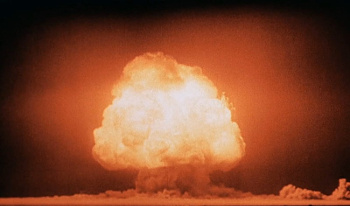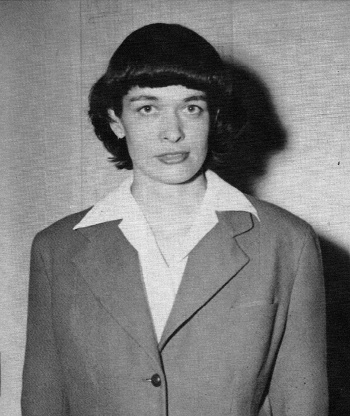
Nuclear Fission
March 19, 2018 Some technologies are envisioned long before they can be sufficiently developed to become marketable. Decades ago, one of my colleagues had a theory about the many new technologies that are abandoned because of problems in implementation. He said that these abandoned technologies are often rediscovered every few decades, but abandoned again when their implementation still proves to be too difficult. Finally, when assisting technologies have developed enough, they become viable at their next rediscovery. A recent example of this is solar photovoltaics, presently enabled by large area thin film technology. An historical example is Charles Babbage's idea of a programmable computer.
Portion of the Babbage Difference Engine No. 1, assembled in 1833.
Charles Babbage (1791-1871) was an English mathematician who was so proficient in his many endeavors that he is called a polymath.
In his book, Economy of Machinery, Babbage decried the fact that skilled workers spent time performing menial tasks, an obvious inefficiency that decreased profitability. At the end of my corporate career, I was forced to do things that our secretary would do when upper management decided it could "save money" by not employing secretaries.
(Woodcut after a drawing by Benjamin Herschel Babbage, eldest son of Charles Babbage, via Wikimedia Commons).
As they say, "necessity is the mother of invention," so nuclear fission, discovered in late 1938 by German chemists, Otto Hahn (1879-1968) and Fritz Strassmann (1902-1980), was quickly developed during World War II. Nuclear fission is the process in which an atomic nucleus splits into smaller, lighter nuclei. The fission can be both natural, as in spontaneous radioactive decay, the result of the inherent instability of some isotopes; or artificial, when neutron bombardment of nuclei causes the fission. In a nuclear reactor or a fission bomb, the neutrons produced in the fission of some nuclei act to cause the fission of other nuclei.

Trinity nuclear test, July 16, 1945.
This demonstration of nuclear fission occurred less than six years after its discovery by Otto Hahn and Fritz Strassmann.
(United States Department of Energy photo, via Wikimedia Commons).
Although Hahn and Strassmann were German, the practical implementation of fission was the provenance of a non-German international team led by Americans. German inaction was apparently the result of some faulty calculations of the critical mass required for a chain reaction. This was revealed by an Allied military program in which ten German scientists who were presumed to have worked on a German nuclear program during World War II were detained for about six months at Farm Hall, a house near Cambridge, England. The group included Walter Gerlach, Otto Hahn, Werner Heisenberg, Max von Laue, and Carl Friedrich von Weizsäcker. Farm Hall was "bugged," and the surreptitious recording of their conversations indicated that Heisenberg had overestimated the amount of enriched uranium required for a fission bomb, deciding on a value of two tons (The critical mass of a bare sphere of uranium-235, 235U, is only 52 kg, or 115 pounds). A more charitable reading of the transcripts, which were released in 1992, is that Heisenberg purposely gave the German military a worst-case estimate of the critical mass of uranium-235 to dissuade bomb development. Hans Bethe presumed that Heisenberg was using a pre-war estimate based on simple random walk theory.[1-2] The first nuclear reactor, Enrico Fermi's Chicago Pile-1 (CP-1), created the first technical self-sustaining nuclear chain reaction on December 2, 1942, more than 75 years ago. I wrote about this reactor in a previous article (The Chicago Pile, January 24, 2014). In all that time, you might think that there are no surprises left in uranium fission. However, a team of nuclear physicists from the Tokyo Institute of Technology (Tokyo, Japan), the Malaysian Nuclear Agency (Selangor Darul Ehsan, Malaysia), the Institute for Nuclear Research (Kiev, Ukraine), Goethe University (Frankfurt am Main, Germany), the Japan Atomic Energy Agency (Ibaraki, Japan), and the National Astronomical Observatory of Japan (Tokyo, Japan), has developed an improved model for the sharing of the excitation energy between nuclear fission fragments.[3-4]

Yes, there is such a thing as a woman physicist.
Leona Woods Marshall (1919-1986) was the youngest member (age 23) of the Chicago Pile team.
In 1966, Woods married Willard Libby, who had won the 1960 Nobel Prize in Chemistry for radiocarbon dating.
This 1946 photo taken at at the University of Chicago is from the Leona Woods Marshall Libby biography in the book, Uranium People, pp. 182-183.
(Argonne National Laboratory photograph, via Wikimedia Commons.)
When uranium-235 accepts a neutron, about 82% of the time, it will fission into barium and krypton according to the nuclear reaction,
As you can see, an abundance of neutrons is created in the reaction, and these cause the chain reaction. However, about 18% of the time, uranium will emit a gamma ray instead, producing the uranium-236 isotope that has a half-life of 2.348 x 107 years. Since uranium-236 production influences the yield, understanding the mechanism for its production is important. During fission, the two nuclear fragments are deformed, and presently used models assume that the deformation is the same for both fragments.[4] The research team developed an improved model for predicting the generation of thermal energy from nuclear fission processes that treated the deformation of each fission fragment independently.[3-4] As it turned out, the deformation for the light and heavy fragments behaves differently, and these results can help improve efficiency in nuclear power generation.[3-4]

Color map of the potential energy surface for uranium-236 showing the energy trajectories in the 4D-Langevin model.
I admit that I'm a contour plot junkie, since I'm attracted to the colors.
Tokyo Institute of Technology image by Chikako Ishizuka.
Their results fit the experimental data of nuclear fission better than the previously used models.[4] In particular, the other models have not adequately reproduced the thermal energy of nuclear fission.[4] The team is continuing this line of research by adding an additional parameter to their model.[4]
References:
- Klaus Gottstein, "Werner Heisenberg and the German Uranium Project 1939 - 1945. Myths and Facts," arXiv, September 9, 2016.
- Hans A. Bethe, "The German Uranium Project," Physics Today, vol. 53, no. 7 (July, 2000), pp. 34ff., https://doi.org/10.1063/1.1292473.
- Chikako Ishizuka, Mark D. Usang, Fedir A. Ivanyuk, Joachim A. Maruhn, Katsuhisa Nishio, and Satoshi Chiba, "Four-dimensional Langevin approach to low-energy nuclear fission of 236U," Phys. Rev. C, vol. 96, no. 6 (December 22, 2017), Article no. 064616. DOI:https://doi.org/10.1103/PhysRevC.96.064616.
- New model considers an extra factor to improve our prediction of nuclear fission, Tokyo Institute of Technology Press Release, December 28, 2017. Also here.